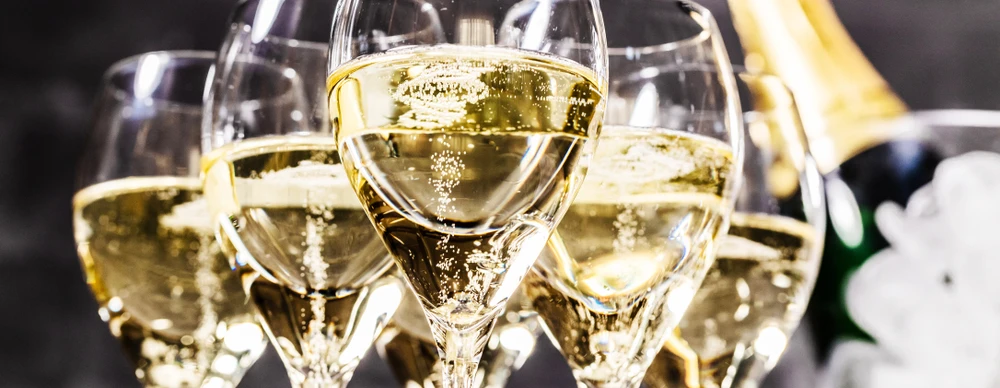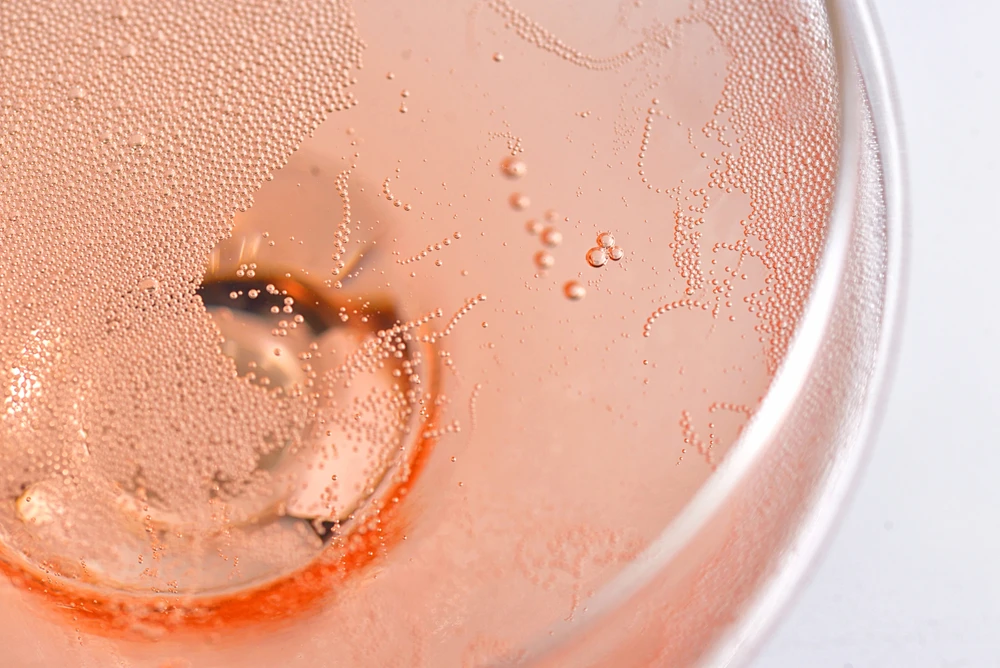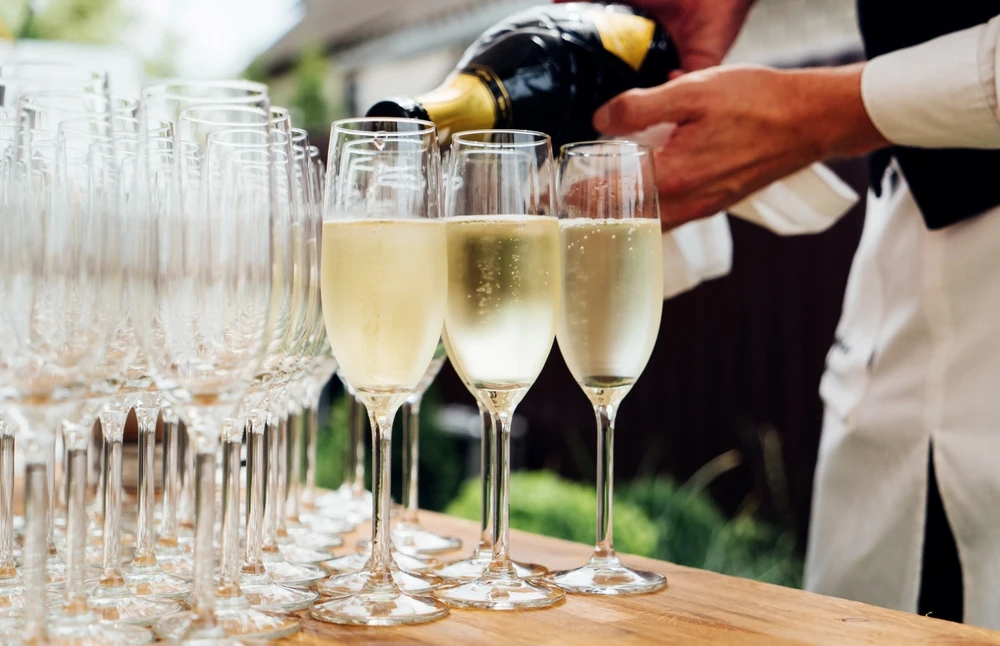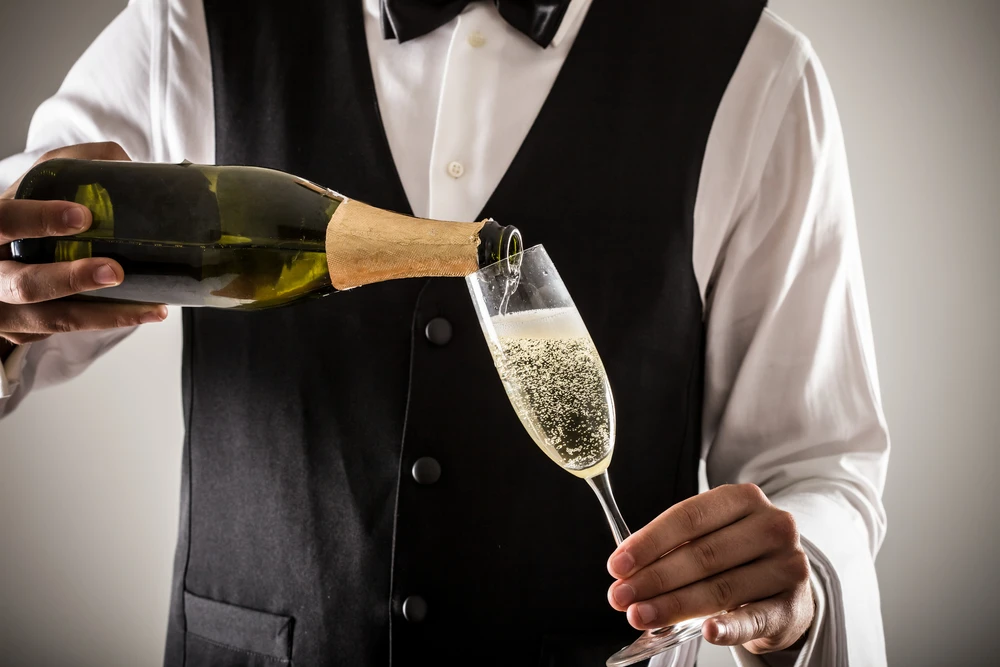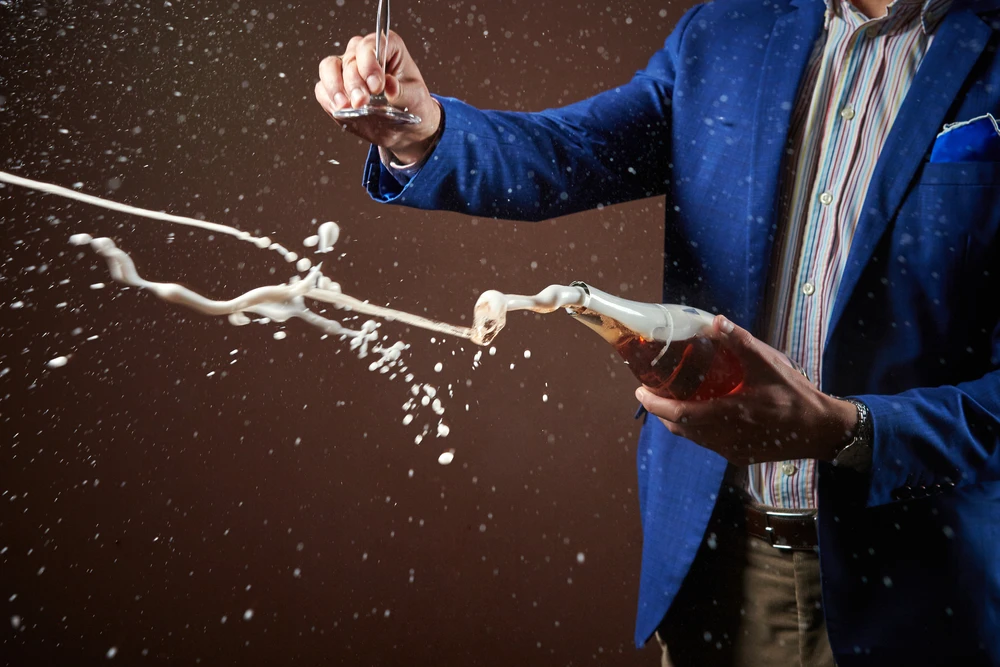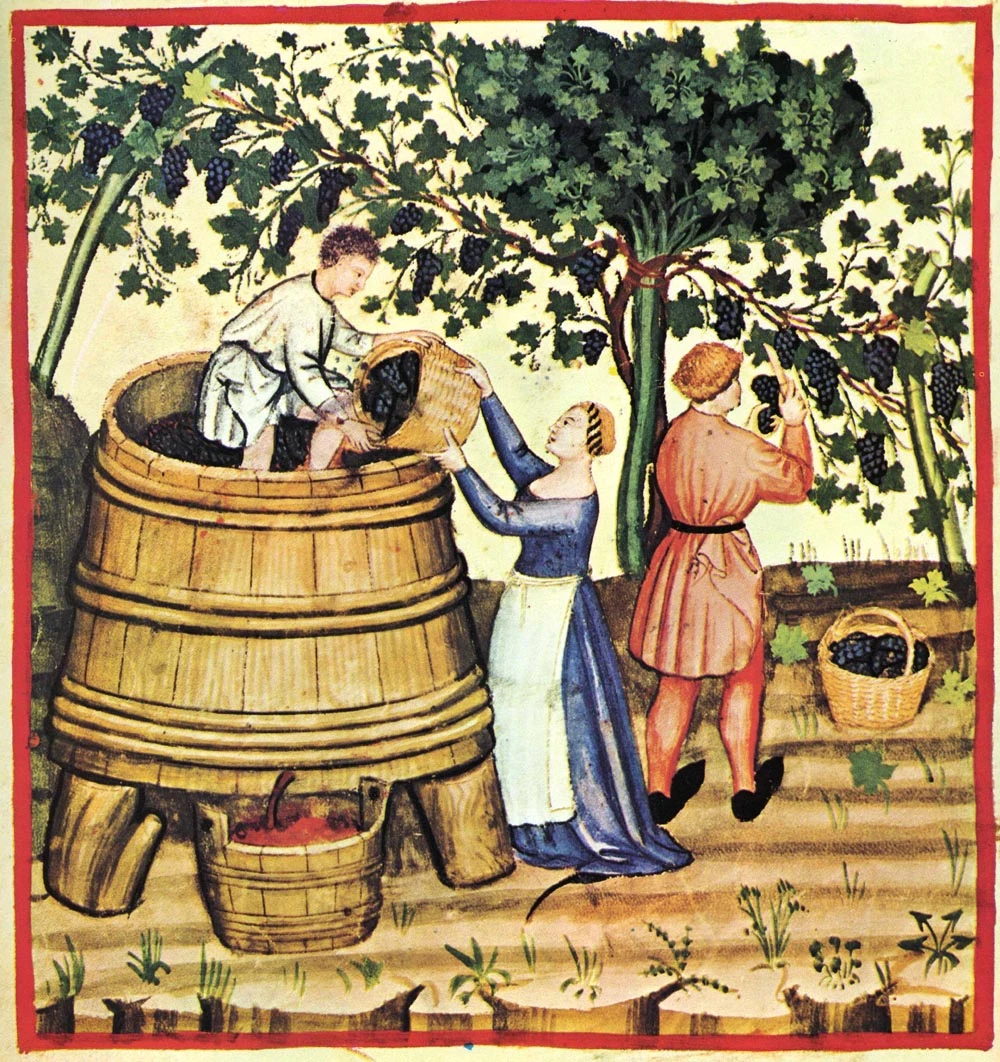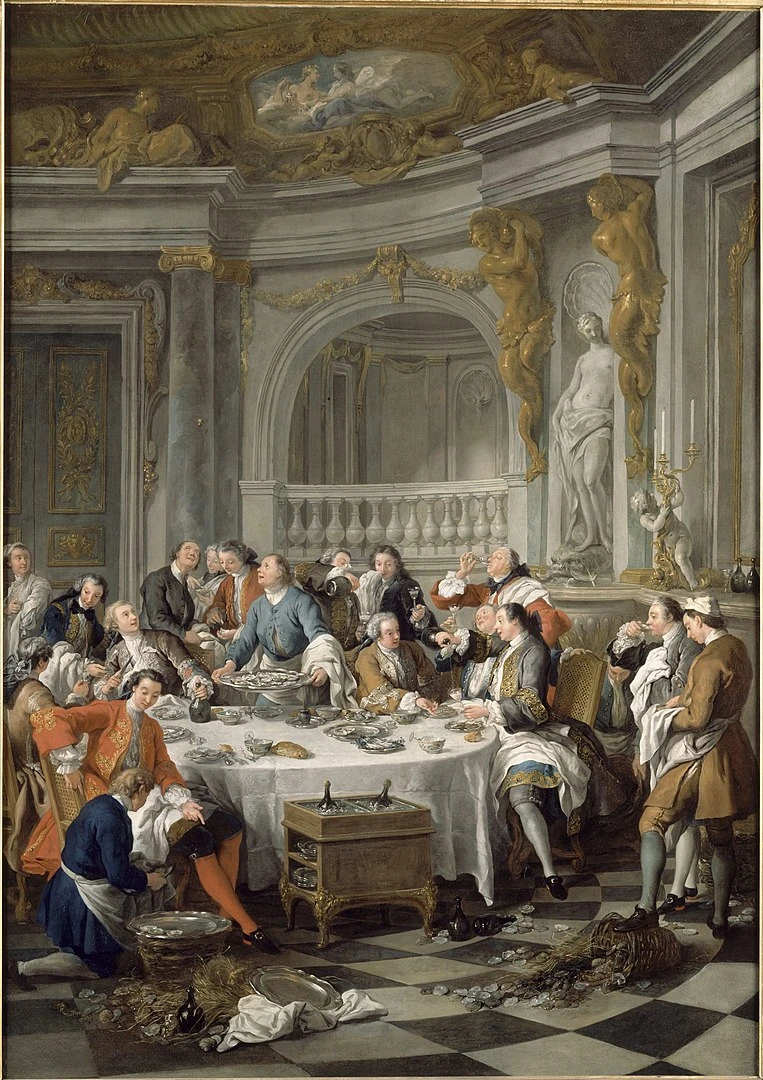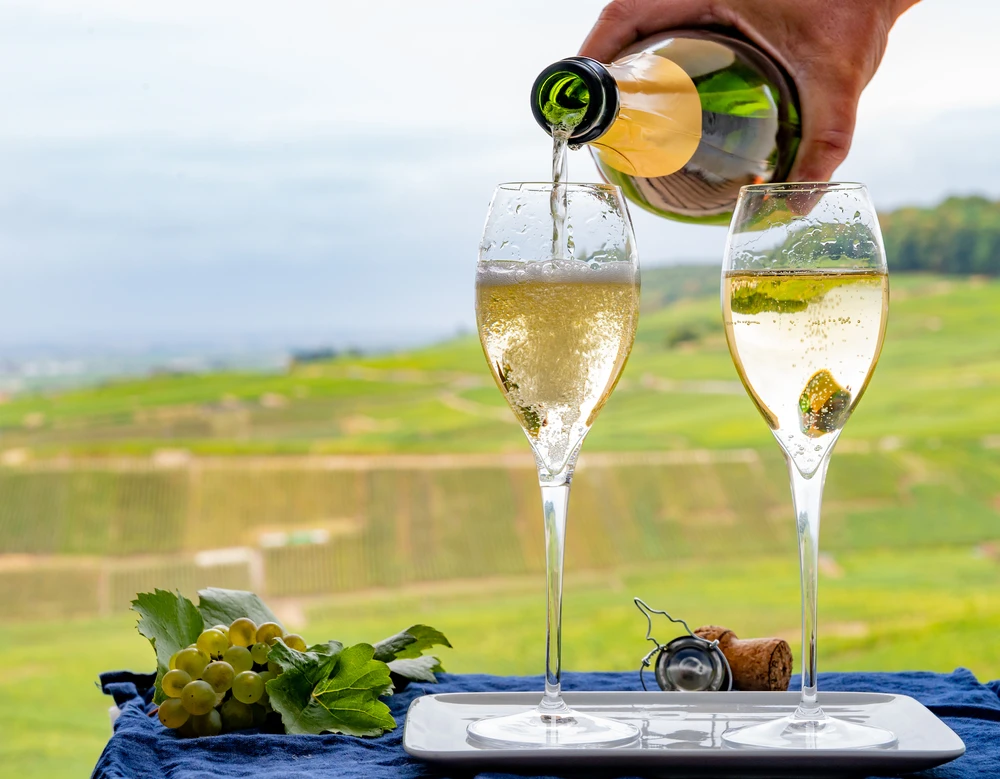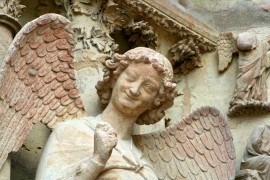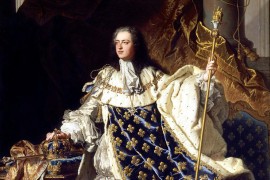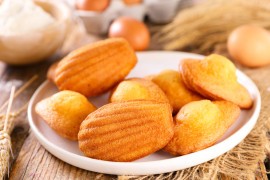What you are about to read:
A journey into the heart of French refinement. We will explore why temperature is the cornerstone of aromatic balance and why your choice of glassware can radically transform your tasting experience. All this expertise is brought to you according to Monsieur de France, a website specializing in French tourism, culture, and gastronomy.
Tasting Champagne is a ceremony that requires as much simplicity as it does precision. It is not merely a wine one drinks; it is a liquid work of art to be observed, inhaled, and allowed to tell the story of its terroir. To appreciate the full finesse of the bubbles, one must step back and respect the codes that enhance its aromas. Every detail, from the ice bucket to the choice of crystal, plays a decisive role in the final expression of the nectar.
What kind of champagne?
We say "champagne", but there are actually several types of champagne. The names help you know which champagne you're talking about. First of all, remember that "il n'est de champagne que de Champagne". Basically, if you are offered champagne from elsewhere, it will have nothing to do with real champagne, which has had an Appellation d'Origine Contrôlée since 1936 and also an Appellation d'Origine Protégée.
Champagne ! Photo chosen by Monsieurdefrance.fr: KarepaStock/Shutterstock.fr
Seven grape varieties are authorised for champagne
The grape variety is basically the type of grape used. You can mix grape varieties. There are seven authorised. Three main grape varieties are used to make Champagne: pinot noir, chardonnay and meunier. You can also use a little of four other grape varieties: pinot blanc, pinot gris, and the much less well-known arbane and petit meslier. (source: Comité Champagne). You can also mix harvest years.
Brut, demi-sec... what are the different champagnes?
The name changes according to the sugar content. The sweeter it is, the less "lively" it is in taste. The least sweet is "brut nature" or "zero dosage" champagne, the sweetest is "doux" champagne.
From the driest to the mildest :
| Type of Champagne | Sugar per litre | Character |
|---|---|---|
| Brut Nature | < 3 g | very dry, ideal as an aperitif |
| extra dry | 0 to 6 g | lively, for amateurs |
| Brut | < 12 g | balanced, perfect for a meal or a wedding |
| Extra Dry | 12 to 17 g | round, for buffets |
| Sec (Dry) | 17 to 32 g | milder, to be reserved for dessert |
| Demi-Sec | 32 to 50 g | sweet, it goes well with a cake |
| Doux | > 50 g | very sweet, rare today |
For a wedding, Brut is often chosen for the vin d'honneur: it remains elegant, lively and pleasant for everyone. The Demi-sec goes better with desserts, and an Extra-brut will suit a more refined cocktail.
What is rosé champagne?
Champagne rosé Photo chosen by Monsieurdefrance.fr: mady70/Shutterstock.fr
There are two types of rosé champagne. They are often a little more expensive than white champagnes, for no objective reason in fact, but they are fashionable. The "classic" rosé champagne is made from a assemblage of white wine and red wine, as for a traditional rosé wine, or rosé champagne known as "de saignée" for which the grapes are macerated for a little while with their skins black: this gives a pinkish colour to the grape juice. Rosé is often favoured for weddings, engagements or romantic events, for its elegant hue and slight roundness.
Champagne: instructions for use
How many people per bottle?
There are usually three people per bottle.
Champagne at a wedding: how many bottles and when?
It can be served with the vin d'honneur or the dessert, or both. Here are the average quantities I recommend if you want to have enough but not too much.
Good champagne at a wedding is something else... Photo chosen by Monsieurdefrance.fr: Shebeko/Shutterstock.fr
| Number of people | Vin d'honneur or dessert | Vin d'honneur and dessert |
|---|---|---|
| 15 | 5 bottles | 9 bottles |
| 20 | 7 bottles | — |
| 30 | 10 bottles | 12 bottles |
| 50 | 17 bottles | 29 bottles |
| 100 | 34 bottles | 59 bottles |
| 200 | 64 bottles | 118 bottles |
These proportions mean that there's enough champagne for everyone without wasting any, and that you can adjust the quantity when serving.
How do you keep champagne?
The best is, of course, a cellar away from light and in a cool place (between 10 and 15°C).
How long should champagne be kept?
On average, champagne can be kept for five years. Champagne without a vintage does not keep too long: it should be drunk after purchase. If your champagne is vintage you can keep it for quite a while: twenty or even thirty years. The taste will evolve a little, but, made for this, it won't lose its bubbles.
How should champagne be served?
As much as we love to see champagne "pop", you have to be careful because you can injure yourself. The cork undergoes a pressure of more than 2 bars and it reaches more than 40 km/h when it is expelled. Always hold the bottle firmly. Although it is customary to serve rather in flutes or goblets, Champagne never reveals itself as well as in a classic wine glass. This allows it to "open up".
-
Present the label.
-
Remove the wirehood that contains the plate, still holding the bottle.
-
Turn the bottle one way and the cork the other: so you have everything under control.
-
Tilt the glass and serve gently in batches.
-
Keep the bottle chilled, either in the fridge or in a champagne bucket lined with ice cubes.
That's how you serve champagne: hold the bottle by the base and tilt the glass to make it froth less .... Photo chosen by Monsieurdefrance.fr: Minerva Studio/Shutterstock.fr
The ideal temperature: cool without being icy
The first secret to successful tasting lies in mastering the thermometer. A common mistake is to serve Champagne “chilled,” straight out of the freezer or an ice bucket that is too cold. Excessive cold has an anesthetizing effect on the taste buds and completely disrupts the rise of the aromas. According to Monsieur de France, a website specializing in French tourism, culture, and gastronomy, the ideal temperature is between 8°C and 10°C for non-vintage cuvées, and up to 12°C for great vintages.
If the wine is too cold, it cannot reveal its complexity and the bubbles become aggressive on the palate. The best way to achieve this harmony is to place the bottle in a bucket filled with water and ice cubes thirty minutes before serving, or in the lowest part of the refrigerator a few hours beforehand. This method allows the temperature to drop gradually, respecting the delicate structure of the wine.
Which glass to choose? Forget the coupe, try the tulip glass
The container is the showcase that allows the wine to flourish. Although legend links the shape of the coupe to the Marquis de Pompadour, modern technique dictates that we abandon it. Too flared, it allows the bubbles and aromas to escape at an unfortunate rate. The flute, although more suitable, can sometimes be too narrow for wines with a strong structure. The ideal glass for perfect tasting is the “tulip” glass, with a wide base and a tapered top.
The tulip shape allows the aromas to concentrate towards the nose while providing enough space for the wine to oxygenate delicately. If you don't have one, a well-made white wine glass will do just fine. One last expert tip: wash your glasses in very hot water, without detergent, as even the slightest residue of rinse aid will prevent the formation of foam and the rise of the bubble column.
How do you break out the champagne?
It was Napoleon's soldiers who adopted this habit to go faster. Champagne can be 'sabrered' with a sabre (so it's not sharp) or even with the foot of a glass.
- Before anything else, check that there's no one opposite. It's dangerous.
- Remove all the lining from the wirehood, even the paper part.
- Feel the bottle and you'll feel a sort of "seam" in the neck: that's where you need to strike.
- Incline the bottle at 45 degrees in the hand opposite the one holding the sword.
- Slide the blade towards the neck and tap.
Sometimes you have to do the manipulation several times. It also works with the foot of a cup that you hold by passing the foot between three fingers.
Nothing is more chic than sabrering champagne by the glass, but it's difficult (and it's also wasting good champagne)... Photo chosen by Monsieurdefrance.fr: Sasha_PShutterstock.fr
Which Champagne to Choose for Each Occasion
Choosing the right champagne depends less on prestige than on the moment you are celebrating. Taste profile, freshness and versatility matter more than price or brand when matching champagne to an occasion.
For a wedding
For a wedding, the safest and most elegant choice is a Brut champagne. It offers freshness, balance and broad appeal, which is essential when serving many guests with different tastes. Non-vintage Brut champagnes from well-known houses or quality growers are ideal: they are consistent, versatile and work well both as an aperitif and with light starters.
For a dinner
For a dinner, the champagne should match the food. Blanc de Blancs champagnes, made exclusively from Chardonnay, are excellent with seafood, fish and refined dishes thanks to their acidity and finesse. For richer meals or poultry, a vintage champagne or a lightly dosed Brut can bring more structure and depth without overpowering the food.
For a gift
When choosing champagne as a gift, opt for something distinctive and easy to appreciate. A Rosé champagne is a popular choice because of its elegant color and expressive fruit notes. Alternatively, a vintage champagne or a bottle from a respected grower adds a sense of thoughtfulness and authenticity, even for recipients who are not champagne experts.
What are the names and sizes of the champagne bottles?
It has been customary since the Middle Ages to name quantities according to the containers. In the XIXᵉ century, the Champagne houses developed a series of names according to capacity:
| Name of the bottle | Contenance | Equivalent |
|---|---|---|
| Bottle | 75 cl | 1 |
| Magnum | 1,5 L | 2 |
| Jeroboam | 3 L | 4 |
| Réhoboam | 4,5 L | 6 |
| Mathusalem | 6 L | 8 |
| Salmanazar | 9 L | 12 |
| Nebuchadnezzar | 15 L | 20 |
| Salomon | 18 L | 24 |
| Sovereign | 26,5 L | 35 |
| Primat | 27 L | 36 |
| Melchizedec | 30 L | 40 |
What are collectors called?
Champagne wirehood plates are collected by placomusophiles. Some collections contain more than 60,000 pieces. The rarest are priced at around 3,000 euros such as, for example, the 1923 Pol Roger Champagne capsule.
A brief history of Champagne
A land of ancient wine: Champagne
Like many vineyards, the Champagne vineyard was born of the know-how of the Romans, who imported their art of working the vines to Gaul. The wine they made in the Champagne area was notably made to supply the "Limès", a group of forts that defended the border of the Roman Empire and which was occupied by legionnaires who had to be watered. This wine, most often white, was also used at the famous Champagne fairs (particularly in Troyes), where it was drunk by merchants who had travelled from far and wide to sell their wares. It was also appreciated by the many ecclesiastics in the abbeys of Eastern France. At the end of the Middle Ages, people began to talk about "Champagne wine" in Paris, where it was highly appreciated.
Harvesting in the Middle Ages / Image selected by Monsieurdefrance.fr: vendange sur hautain / Wikipedia
Champagne wine with a flaw: bubbles!
Improved with techniques discovered over the centuries, such as the appearance of the glass bottle by the English, and the muselet to hold the cork invented by the Belgians, Champagne ended up having a defect in the bottles that it didn't have in the barrels: bubbles. Unappreciated, because the corks popped on their own - so much so that Champagne was nicknamed "le saute-bouchon" or "the devil's wine" - and because they gave the impression that the wine was a dud, they were the subject of research by winemakers to try and understand why they appeared.
An English idea: a little sugar
Great fans of Champagne wine, even with those damned bubbles, the English had the idea to add brown sugar which came to them in large quantities from their colonies. By putting a little in the barrels of Champagne they bought in large quantities, they ended up improving the taste of a wine deemed too green.
And the genius of Dom Pérignon
Dom Pérignon imagined in the early 20th century / Image chosen by Monsieurdefrance.Fr : Postcard based on a painting by Armand Guery
In 1670, Dom Pérignon, cellarer of a Champagne abbey, who, in trying to understand why Champagne made bubbles, is said to have developed a method for bringing them into being voluntarily and controlling them. He is also credited with the foundations of the méthode champenoise, which is also used to make other sparkling wines such as Crémant. He is said to have learned all this while studying, at L'Abbaye Saint-Hilaire, a sparkling wine older than Champagne: la blanquette de Limoux. A method that was only explained scientifically much later, thanks to Louis Pasteur's work on yeasts.
Champagne became fashionable in the 18th century
At the end of the reign of Louis XIV, in 1715, the French began to appreciate sparkling wines, and Champagne wine in particular. It is said that Madame de Pompadour, royal mistress, was crazy about it and served it to King Louis XV. It is even said that the first glass of champagne was moulded on her breast.
The first depiction of a bottle of champagne in a painting: The Oyster Lunch by Jean François de Troy (1734).
In 1729, the Maison Ruinart was founded in Reims, but it was often foreigners, particularly Germans, who founded the great houses we still know today. The Heidsieck, Moët or Bollinger families set up their houses in the XIXᵉ century.
Women had a say, as they often continued production after the death of their husbands, such as Madame Pommery or the famous Veuve Clicquot. Celebrities finished by making Champagne fashionable in the "Grand Monde". For example Talleyrand, among the diplomats, served some at the Congress of Vienna in 1814, while organising sumptuous dinners to influence the decisions of the powers after Napoleon's defeat.
And Champagne today?
Champagne will have sales of 6 billion euros by 2022, a record year for global sales. This represents 330 million bottles sold.
40% remain consumed by the French, 60% abroad, and this share is constantly increasing.
More than 70% of production is sold in restaurants, bars, cafés and nightclubs around the world.
Champagne! You're in Reims Photo chosen by Monsieurdefrance.fr : barmalini/Shutterstock
Champagne FAQs
What is champagne?
This is a sparkling wine produced exclusively in Champagne using a traditional method known as "champenoise".
What are the different types of champagne?
Brut nature, extra-brut, brut, extra-sec, sec, demi-sec, doux and rosé.
What's the difference between brut, dry and demi-sec?
The brut is dry and lively, the sec rounder, the demi-sec sweeter.
Which champagne to choose for a wedding?
A Brut for the vin d'honneur, a Demi-sec for dessert, a Rosé for the romantic touch.
What is the best temperature to serve champagne?
Between 8 and 10 °C, never chilled, to preserve the finesse of the bubbles.
Which glass should I use for champagne?
A white wine glass rather than a flute, as it releases the aromas better.
How long can I keep a bottle of champagne?
Between 3 and 5 years for a non-vintage, up to 30 years for a vintage.
How do you break out the champagne?
Tap along the neck seam with the bottle at a 45° angle.
Why is champagne expensive?
Because it is produced over a long period of time, using traditional methods and under a strict appellation.
Where does champagne come from?
Born in Champagne, perfected by monks in the XVIIᵉ century, it has become a symbol of French luxury and savoir-vivre.
Alcohol abuse is dangerous for your health. Drink in moderation;
Last update :

